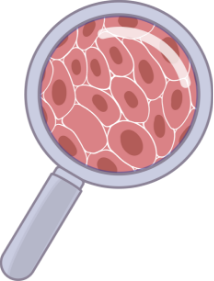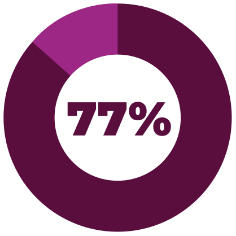Fibroids Information Center
Everything you need to know about uterine fibroids

What are fibroids
and what do they look like?
- They are muscular tumors that grow in the wall of the uterus
- They’re almost always benign (not cancerous) growths
- They can grow as a single tumor, or there can be many of them
- They can be as small as an apple seed or as big as a melon

Fibroids due to pregnancy
77% of women will develop fibroids sometime during their childbearing years
While the exact cause isn’t fully understood, fibroids are linked to hormonal fluctuations, especially estrogen and progesterone.
1 in 3
women get fibroids

Factors that increase fibroid risk
- Higher estrogen levels
- Vitamin D deficiency
- Excess body weight
- Frequent use of hair relaxers
- Diet rich in red meat
- Sugary foods
Age
Women typically between the ages of 30-50 years old are more prone to fibroids.
Genetics
Individuals whose mothers have had fibroids may face up to 3 times the risk of developing fibroids themselves
Ethnicity
Minority women face 2-3 times higher prevalence, earlier onset, larger tumors, and more severe symptoms, often leading to higher hysterectomy rates
